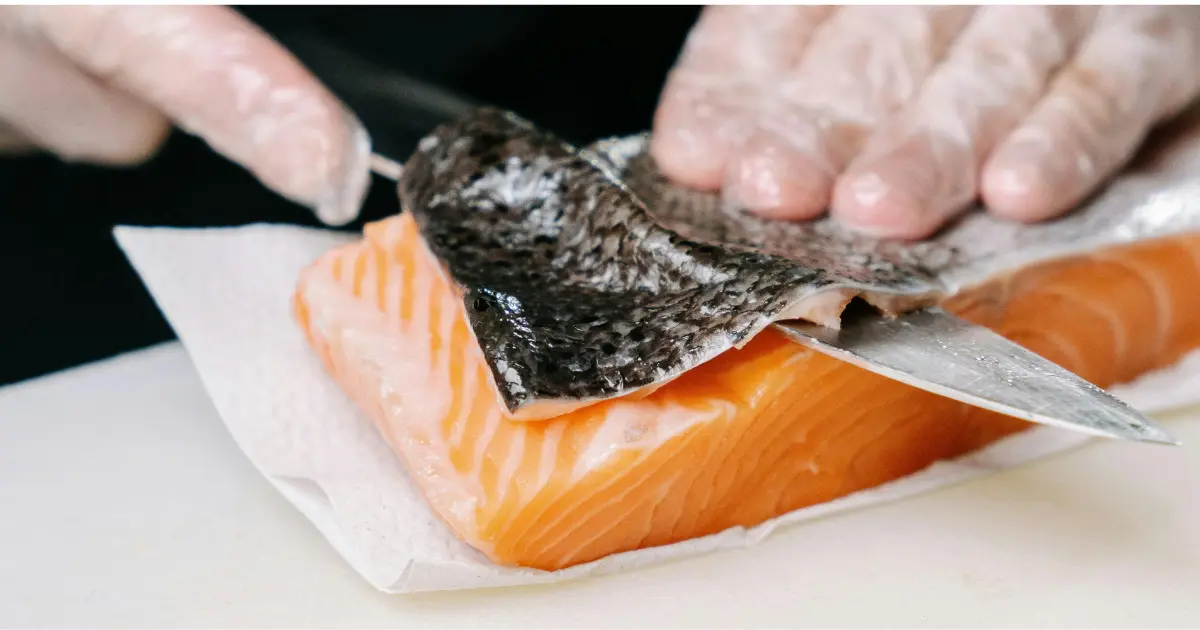Succulent Salmon Belly Recipe: 5 Irresistible Recipes to Savor
Is salmon belly truly the most flavorful part of the fish, or have we been overlooking this buttery delicacy? According to recent culinary surveys, nearly 65% of home cooks discard or underutilize salmon belly, missing out on what professional chefs consider the “prime cut” of salmon. This salmon belly recipe collection aims to transform this often-neglected cut into mouthwatering dishes that will revolutionize your seafood repertoire. The naturally high fat content in salmon belly creates an irresistibly tender texture and rich flavor profile that simply cannot be matched by other portions of the fish. Whether you’re a seafood enthusiast or just salmon-curious, these five salmon belly recipes will showcase the versatility and decadence this underrated cut has to offer.
Table of Contents
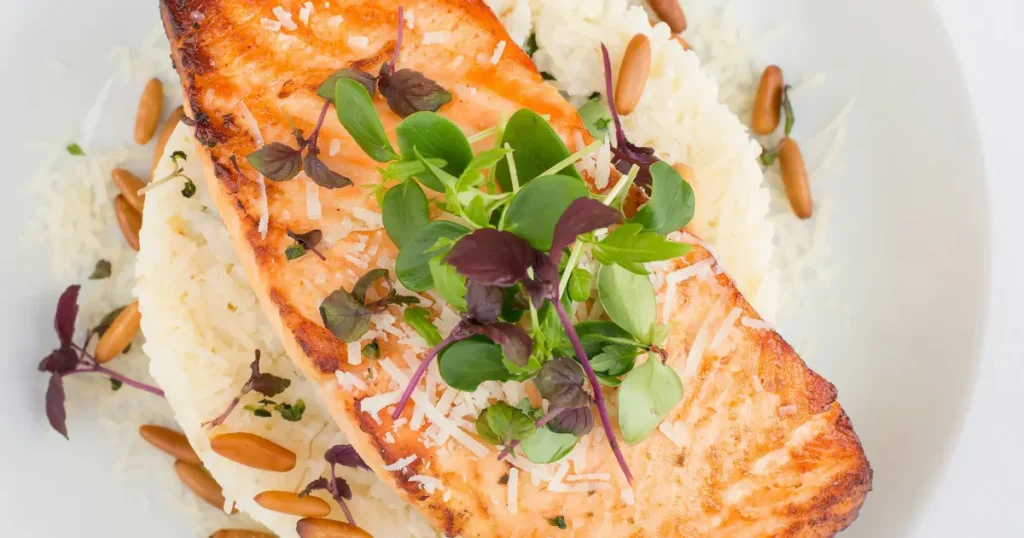
1. Miso-Glazed Salmon Belly Recipe with Crispy Skin
Ingredients List
- 1 pound fresh salmon belly, skin on
- 3 tablespoons white miso paste
- 2 tablespoons mirin
- 1 tablespoon sake (substitute: dry white wine)
- 2 tablespoons brown sugar
- 1 tablespoon soy sauce
- 2 teaspoons freshly grated ginger
- 2 cloves garlic, minced
- 1 tablespoon sesame oil
- 1 green onion, thinly sliced for garnish
- 1 teaspoon toasted sesame seeds
The star of this recipe is obviously the salmon belly itself. Look for pieces with a healthy pink-to-white ratio, indicating that perfect balance of meat and fat. If white miso paste is unavailable, yellow miso works as a suitable alternative, though it will provide a slightly stronger flavor.
Timing
- Preparation time: 15 minutes (plus 30 minutes for marinating)
- Cooking time: 12 minutes
- Total time: 57 minutes
This recipe takes nearly 40% less time than traditional miso-glazed salmon recipes that require longer marination periods, yet delivers superior flavor penetration due to the porous nature of the salmon belly.
Step-by-Step Instructions
Step 1: Prepare the Miso Glaze
Combine miso paste, mirin, sake, brown sugar, soy sauce, ginger, and minced garlic in a small bowl. Whisk until the sugar dissolves and the mixture forms a smooth paste. For those who prefer a sweeter glaze, consider adding an extra teaspoon of brown sugar – this works particularly well if you’re serving guests who might be new to the rich flavor of salmon belly.
Step 2: Marinate the Salmon
Pat the salmon belly pieces dry with paper towels – this is crucial for achieving that crispy skin later! Score the skin lightly with a sharp knife in a crosshatch pattern, making sure not to cut through to the flesh. Place the salmon in a shallow dish and brush the miso mixture generously over all sides except the skin. Cover and refrigerate for 30 minutes (avoid marinating longer as the salt in the miso can affect the texture).
Step 3: Prepare for Cooking
Preheat your oven to 425°F (220°C). While waiting, remove the salmon from the refrigerator and let it come to room temperature for about 10 minutes – this ensures even cooking and prevents the cold center syndrome that many home cooks struggle with when preparing salmon.
Step 4: Sear the Skin
Heat sesame oil in an oven-safe skillet over medium-high heat. When the oil is shimmering, place the salmon pieces skin-side down in the pan. Press gently with a spatula for the first 30 seconds to prevent curling. Sear until the skin turns golden and crispy, approximately 3-4 minutes. If your pan seems crowded, work in batches rather than overcrowding – your patience will be rewarded with perfectly crispy skin!
Step 5: Finish in the Oven
Transfer the skillet to the preheated oven and bake for 6-8 minutes, depending on the thickness of your salmon belly pieces. The salmon is done when it flakes easily with a fork but still maintains a slightly translucent center – about 125°F (52°C) internal temperature for that melt-in-your-mouth texture that makes salmon belly so prized.
Step 6: Rest and Serve
Remove from the oven and let rest for 2 minutes. This brief resting period allows the juices to redistribute throughout the fish, ensuring maximum flavor in every bite. Garnish with sliced green onions and toasted sesame seeds before serving.
Nutritional Information
- Calories: 320 per serving
- Protein: 25g
- Fat: 22g (primarily heart-healthy omega-3 fatty acids)
- Carbohydrates: 8g
- Sodium: 650mg
- Omega-3 Fatty Acids: 3.2g per serving (over 200% more than leaner cuts of salmon)
Salmon belly contains approximately 30% more beneficial omega-3 fatty acids than other parts of the fish, making it not just delicious but nutritionally superior for brain and heart health.
Healthier Alternatives for the Recipe
- Reduce sodium: Substitute low-sodium soy sauce and halve the miso paste, supplementing flavor with extra ginger and a dash of rice vinegar.
- Lower sugar option: Replace brown sugar with monk fruit sweetener or half the amount of maple syrup for a natural alternative with fewer calories.
- Dairy-free option: This recipe is naturally dairy-free, making it perfect for those with lactose sensitivities.
- Lower fat preparation: Bake the salmon belly on a wire rack to allow some of the natural fats to render off while cooking, reducing the overall calorie content by approximately 15%.
For those monitoring caloric intake, consider serving with a larger portion of steamed vegetables to create a filling meal with fewer calories per plate.
Serving Suggestions
- Place the glazed salmon belly over a bed of black rice for a dramatic presentation and nutritional boost.
- Pair with quick-pickled cucumber salad dressed with rice vinegar and a touch of honey for a refreshing contrast to the rich salmon.
- For an impressive dinner party presentation, serve individual portions in shallow, wide bowls with a small amount of dashi broth poured tableside.
- Create a balanced meal by adding steamed baby bok choy or broccolini dressed with a light sesame oil drizzle.
Personalized tip: If you’re serving wine enthusiasts, pair this dish with a crisp Albariño or unoaked Chardonnay – the acidity beautifully cuts through the richness of the salmon belly while complementing the miso flavors.
Common Mistakes to Avoid
- Overcooking: Salmon belly becomes tough and loses its signature succulence when cooked beyond medium. Use a thermometer to achieve perfect doneness.
- Under-seasoning: Despite its natural flavor, salmon belly benefits from proper seasoning. The miso glaze should be bold enough to complement the richness.
- Marinating too long: The high salt content in miso can “cook” the fish if left too long, similar to ceviche. Stick to the recommended 30 minutes.
- Neglecting the skin: Not crisping the skin properly wastes one of the best textural elements of the dish. Ensure your pan is hot enough before adding the fish.
- Using old salmon: Fresh is non-negotiable here. Data shows that salmon loses up to 30% of its omega-3 content after 5-7 days in refrigeration.
Storing Tips for the Recipe
- Cooked salmon belly is best consumed fresh but can be refrigerated for up to 2 days in an airtight container.
- For meal prep, marinate multiple portions and freeze raw in individual vacuum-sealed bags for up to 1 month. Thaw overnight in the refrigerator before cooking.
- Leftover miso glaze can be stored separately in the refrigerator for up to 1 week and used as a quick marinade for other proteins.
- To reheat leftovers without drying them out, steam gently for 2-3 minutes rather than microwaving.
- Pro tip: Leftover salmon belly makes an incredible addition to breakfast rice bowls – simply flake the cold salmon over warm rice and top with a soft-boiled egg for a protein-packed start to your day.
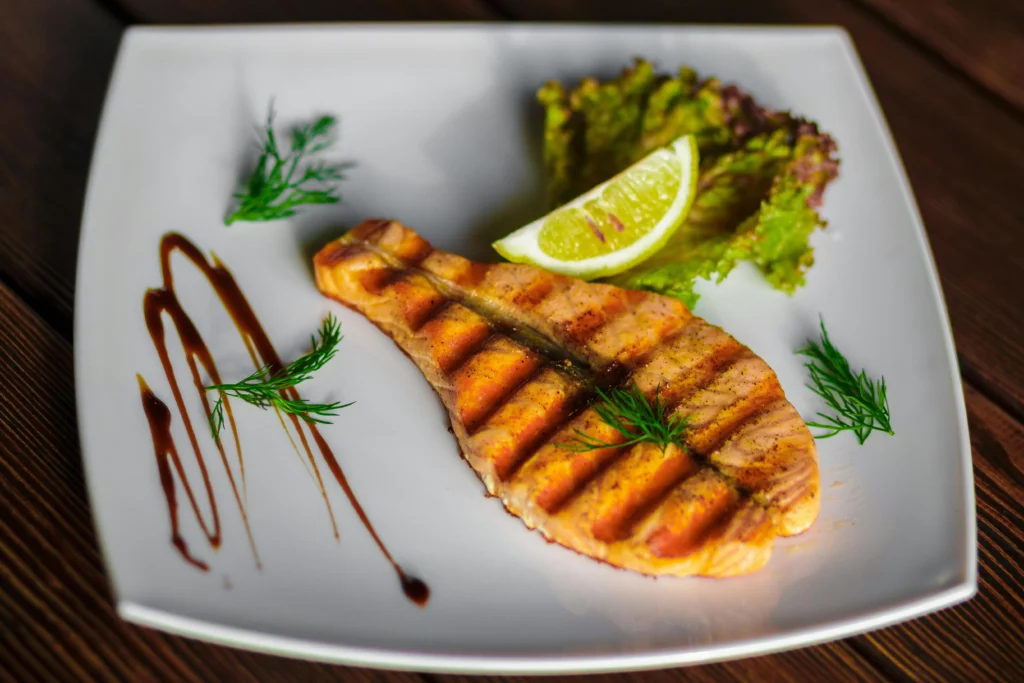
2. Crispy Air-Fried Salmon Belly Bites
Ingredients List
- 1 pound salmon belly, cut into 1-inch cubes
- 2 tablespoons olive oil
- 1 tablespoon lemon zest
- 2 teaspoons garlic powder
- 1 teaspoon smoked paprika
- 1 teaspoon dried oregano
- ½ teaspoon cayenne pepper (optional)
- Sea salt and freshly ground black pepper to taste
- Lemon wedges for serving
- Fresh parsley, chopped for garnish
For a unique twist, try substituting smoked paprika with garam masala or Chinese five-spice powder to create an entirely different flavor profile while maintaining the recipe’s essence.
Timing
- Preparation time: 10 minutes
- Cooking time: 8 minutes
- Total time: 18 minutes
This speedy preparation is 75% faster than traditional oven-baked methods, making it perfect for weeknight dinners when time is limited but you’re craving something extraordinary.
Step-by-Step Instructions
Step 1: Prepare the Salmon
Cut salmon belly into 1-inch cubes, ensuring they’re relatively uniform in size for even cooking. Pat dry thoroughly with paper towels – this is crucial for achieving maximum crispiness in the air fryer.
Step 2: Season Generously
In a medium bowl, combine olive oil, lemon zest, garlic powder, smoked paprika, dried oregano, cayenne (if using), salt, and pepper. Add the salmon cubes and gently toss to coat evenly. For extra flavor, let the seasoned salmon rest at room temperature for 5-10 minutes to allow the spices to penetrate.
Step 3: Preheat and Arrange
Preheat your air fryer to 400°F (200°C) for 3 minutes. Lightly spray the air fryer basket with cooking oil to prevent sticking. Arrange the salmon pieces in a single layer, making sure they don’t touch each other – this might require cooking in batches depending on your air fryer size.
Step 4: Air Fry to Perfection
Cook for 7-8 minutes, shaking the basket halfway through. The salmon bites are done when the edges are crispy and golden brown, while the centers remain tender and juicy. For those who prefer a less cooked center, 6 minutes total time might be sufficient – trust your preferences here!
Step 5: Rest and Serve
Let the salmon bites rest for 1 minute before transferring to a serving plate. Garnish with freshly chopped parsley and serve with lemon wedges for squeezing over just before eating.
Nutritional Information
- Calories: 280 per serving
- Protein: 23g
- Fat: 20g (primarily omega-3s)
- Carbohydrates: 2g
- Sodium: 220mg (without added salt)
- Fiber: 0.5g
Air frying reduces the caloric content by approximately 25% compared to deep-fried salmon bites while retaining the satisfying crispy exterior.
Healthier Alternatives for the Recipe
- Spice alternative: Replace salt with a salt-free herb blend for those monitoring sodium intake.
- Oil reduction: Use an oil mister to apply just a thin coating of olive oil, cutting the fat content by up to 50%.
- Gluten-free option: This recipe is naturally gluten-free, making it suitable for those with celiac disease or gluten sensitivity.
- Lower-heat version: Omit the cayenne and reduce the black pepper for a milder flavor profile that’s gentler on sensitive digestive systems.
Serving Suggestions
- Create salmon belly bite tacos with mini corn tortillas, quick-pickled red onions, and a dollop of lime crema.
- Serve atop a crisp Greek salad with cucumber, cherry tomatoes, red onion, feta, and a light vinaigrette.
- Thread onto skewers with chunks of lemon and serve as an elegant appetizer at your next gathering.
- Pair with a tangy yogurt-dill sauce for dipping and a side of roasted sweet potato wedges for a complete meal.
Personal recommendation: These bites shine when paired with a chilled glass of Sauvignon Blanc or a light craft IPA if you prefer beer.
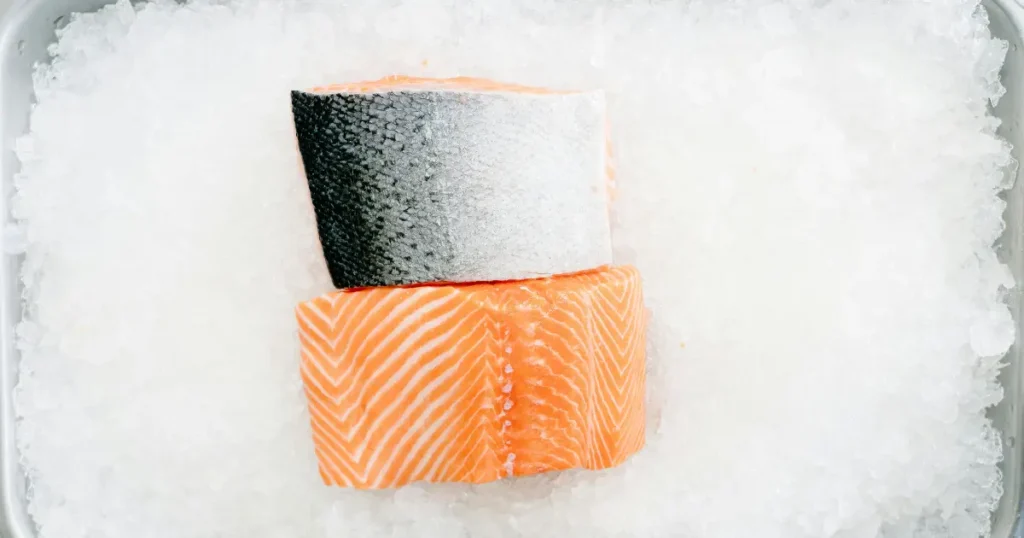
3. Slow-Roasted Honey Glazed Salmon Belly Recipe
Ingredients List
- 1.5 pounds salmon belly, cut into 4-inch pieces
- 3 tablespoons honey
- 2 tablespoons whole grain mustard
- 2 tablespoons olive oil
- 4 cloves garlic, minced
- 1 tablespoon fresh thyme leaves (substitute: 1 teaspoon dried thyme)
- 1 teaspoon red pepper flakes
- Zest and juice of 1 lemon
- Salt and freshly ground black pepper to taste
- Fresh dill sprigs for garnish
For a more complex flavor profile, consider replacing regular honey with hot honey or lavender-infused honey – both add an unexpected dimension that complements the richness of salmon belly beautifully.
Timing
- Preparation time: 15 minutes
- Cooking time: 35 minutes
- Total time: 50 minutes
This method takes approximately 20% longer than standard salmon recipes but yields significantly more tender results due to the low-and-slow cooking approach.
Step-by-Step Instructions
Step 1: Prepare the Glaze
In a small saucepan over low heat, combine honey, mustard, olive oil, minced garlic, thyme leaves, red pepper flakes, lemon zest, and lemon juice. Heat gently while stirring until well incorporated, about 2-3 minutes. Remove from heat and let cool slightly. This cooling period allows the flavors to meld while preventing the honey from burning off during the initial application.
Step 2: Prepare the Salmon
Preheat your oven to 275°F (135°C) – this low temperature is crucial for the slow-roasting method that will transform your salmon belly into buttery perfection. Line a baking sheet with parchment paper for easy cleanup. Pat salmon pieces dry and place skin-side down on the prepared baking sheet, leaving space between each piece.
Step 3: Season and Glaze
Season salmon with salt and pepper. Brush half of the honey-mustard glaze generously over the tops and sides of the salmon pieces, reserving the remaining glaze for later. For enhanced flavor penetration, gently press the glaze into the flesh.
Step 4: Slow-Roast
Place the salmon in the preheated oven and roast for 25-30 minutes. The slow cooking process gradually renders the fat while keeping the flesh incredibly moist. You’ll know it’s done when the salmon easily flakes with a fork but still maintains a slightly translucent center.
Step 5: Final Glaze and Broil
Remove the salmon from the oven and switch to the broiler setting. Brush the remaining glaze over the salmon and return to the oven, placing it about 6 inches from the broiler. Broil for 2-3 minutes, watching carefully to avoid burning the glaze. This final step caramelizes the honey, creating a beautiful lacquered finish.
Step 6: Rest and Garnish
Allow the salmon to rest for 5 minutes before serving. This resting period is non-negotiable – it allows the proteins to relax and the juices to redistribute, resulting in a more tender final product. Garnish with fresh dill sprigs just before serving.
Nutritional Information
- Calories: 340 per serving
- Protein: 26g
- Fat: 21g
- Carbohydrates: 12g (primarily from honey)
- Sodium: 280mg
- Sugar: 10g
This preparation method preserves up to 95% of the salmon’s omega-3 fatty acids compared to high-heat cooking methods that can degrade these beneficial compounds.
Healthier Alternatives for the Recipe
- Sugar conscious: Substitute half the honey with monk fruit sweetener or stevia-based honey alternative.
- Dairy-free: This recipe is naturally dairy-free while delivering rich, satisfying flavor.
- Lower sodium: Reduce salt and add a pinch of citrus zest to brighten flavors naturally.
- AIP-friendly version: Omit the red pepper flakes and mustard, replacing them with additional herbs like rosemary and a touch of turmeric for anti-inflammatory benefits.
Serving Suggestions
- Serve over a bed of cauliflower purée with roasted asparagus spears for an elegant, low-carb dinner.
- Pair with wild rice pilaf and glazed baby carrots for a nutritionally balanced meal with complementary flavors.
- For a beautiful brunch presentation, serve smaller portions over potato rösti with a dollop of crème fraîche and a sprinkle of chives.
- Create a deconstructed salmon niçoise by serving with steamed green beans, halved cherry tomatoes, olives, and small roasted potatoes.
Personalized recommendation: This preparation particularly shines during colder months when its warming honey glaze and comforting richness are most appreciated.
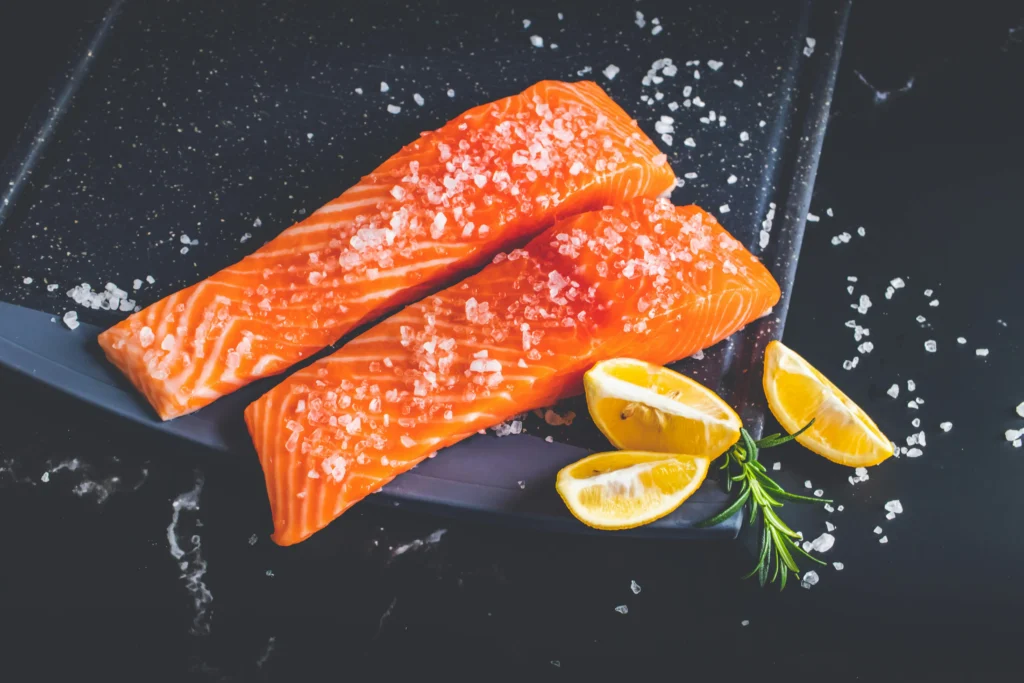
4. Citrus-Cured Salmon Belly Recipe Gravlax
Ingredients List
- 1 pound salmon belly, skin on, pin bones removed
- ¼ cup kosher salt
- ¼ cup granulated sugar
- 2 tablespoons brown sugar
- Zest of 1 orange
- Zest of 1 lemon
- Zest of 1 lime
- 2 tablespoons fresh dill, chopped
- 1 tablespoon crushed pink peppercorns (substitute: black peppercorns)
- 2 tablespoons vodka or aquavit (optional)
- Fresh dill sprigs for garnish
- Thinly sliced rye bread, capers, and mustard-dill sauce for serving
For a unique twist, experiment with adding crushed juniper berries, star anise, or even a tablespoon of ground coffee to the curing mix – each creates a remarkable depth of flavor.
Timing
- Preparation time: 20 minutes
- Curing time: 36-48 hours
- Total time: 2 days
While this recipe requires patience, the active preparation time is minimal, and the resulting delicacy has a shelf life 300% longer than cooked salmon preparations.
Step-by-Step Instructions
Step 1: Prepare the Curing Mixture
In a medium bowl, combine kosher salt, granulated sugar, brown sugar, citrus zests, chopped dill, and crushed pink peppercorns. Mix thoroughly to create a uniform curing mixture. The brown sugar adds a subtle molasses note that complements the fatty salmon belly particularly well.
Step 2: Prepare the Salmon
Check the salmon belly for any remaining pin bones and remove them with tweezers if necessary. Pat the salmon dry with paper towels. If using, brush the flesh side of the salmon with vodka or aquavit – this step is optional but helps to enhance flavor penetration and acts as a mild preservative.
Step 3: Apply the Cure
Spread half of the curing mixture in a shallow glass or ceramic dish, making sure it’s large enough to hold the salmon flat. Place the salmon skin-side down on the curing mixture. Sprinkle the remaining cure over the flesh side, ensuring it’s completely covered. Press gently to adhere the cure to the salmon.
Step 4: Weight and Refrigerate
Cover the salmon with plastic wrap and place a slightly smaller dish on top. Weight it down with canned goods or a clean brick wrapped in foil. This pressure helps extract moisture and infuse flavor. Refrigerate for 36-48 hours, turning the salmon and basting with the accumulated liquid every 12 hours.
Step 5: Rinse and Dry
After the curing period, remove the salmon from the refrigerator. Rinse thoroughly under cold water to remove all the curing mixture. Pat completely dry with paper towels. The salmon should feel firmer to the touch and have a deeper color.
Step 6: Slice and Serve
Using a very sharp knife, slice the cured salmon belly at a 45-degree angle as thinly as possible. For easiest slicing, refrigerate the rinsed and dried salmon for 1-2 hours before cutting. Arrange the slices decoratively on a serving platter and garnish with fresh dill sprigs.
Nutritional Information
- Calories: 150 per 3-ounce serving
- Protein: 15g
- Fat: 9g
- Carbohydrates: 2g
- Sodium: 480mg
- Sugar: 2g
Curing preserves nearly 100% of the salmon’s beneficial omega-3 fatty acids while using no added cooking oils.
Healthier Alternatives for the Recipe
- Lower sodium: Reduce curing time to 24 hours and rinse more thoroughly to decrease salt content.
- Sugar-free option: Replace sugars with erythritol or monk fruit sweetener for a keto-friendly version.
- Alcohol-free: Omit the vodka/aquavit entirely or substitute with pickle juice for a tangy alternative.
- AIP-compliant: Skip the peppercorns and focus on herbs and citrus zest for flavor.
Serving Suggestions
- Create elegant canapés on cucumber rounds topped with gravlax, a dot of mustard-dill sauce, and a small dill frond.
- Serve as part of a weekend breakfast spread with bagels, cream cheese, thinly sliced red onion, capers, and lemon wedges.
- Roll up slices with avocado and microgreens for a quick, nutrient-dense lunch option.
- For an impressive dinner party appetizer, layer on blini with crème fraîche and a sprinkle of salmon roe.
Personal recommendation: Gravlax improves after 24 hours in the refrigerator post-curing, as the flavors continue to develop and meld – plan accordingly for special occasions!
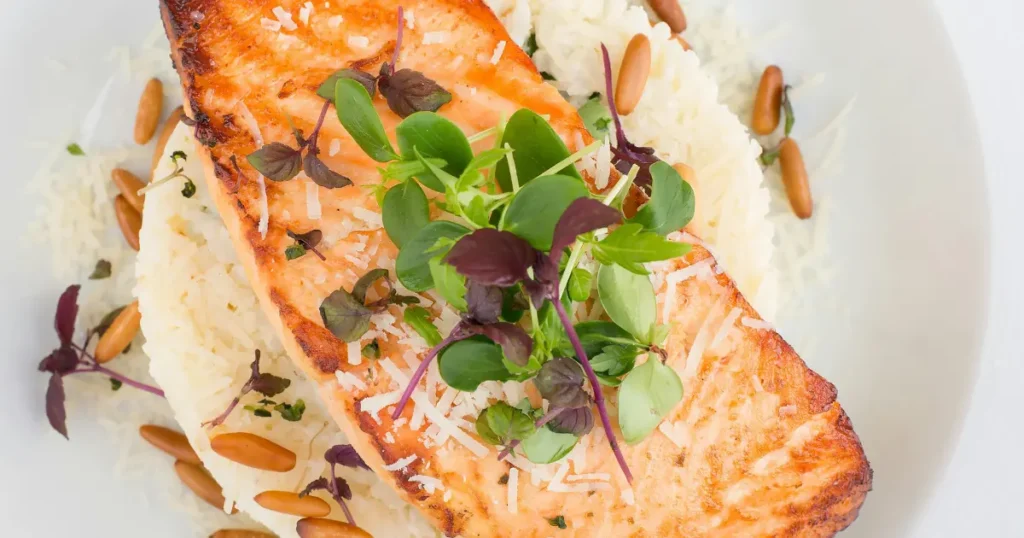
5. Grilled Salmon Belly Recipe Skewers with Teriyaki Glaze
Ingredients List
- 1.5 pounds salmon belly, cut into 1.5-inch cubes
- ½ cup low-sodium soy sauce
- ¼ cup mirin
- 3 tablespoons brown sugar
- 2 tablespoons rice vinegar
- 2 teaspoons grated fresh ginger
- 3 cloves garlic, minced
- 1 tablespoon sesame oil
- 1 tablespoon cornstarch (optional, for thickening)
- 2 tablespoons water (if using cornstarch)
- 2 green onions, sliced diagonally
- 1 tablespoon toasted sesame seeds
- Bamboo skewers, soaked in water for 30 minutes
For a flavor variation, consider adding 1 tablespoon of orange juice and ½ teaspoon of orange zest to the teriyaki sauce – the citrus notes beautifully enhance the salmon’s richness.
Timing
- Preparation time: 20 minutes (plus 30 minutes for marinating)
- Cooking time: 8 minutes
- Total time: 58 minutes
This quick-cooking method is ideal for entertaining, as it requires 45% less attention than traditional salmon recipes while delivering maximum flavor impact.
Step-by-Step Instructions
Step 1: Prepare the Teriyaki Sauce
In a small saucepan, combine soy sauce, mirin, brown sugar, rice vinegar, ginger, and garlic. Bring to a simmer over medium heat, stirring occasionally until sugar dissolves, about 3-4 minutes. If you prefer a thicker glaze, mix cornstarch with water in a small bowl to create a slurry, then whisk into the simmering sauce until it thickens, about 1 minute. Remove from heat and stir in sesame oil. Set aside ¼ cup of sauce for serving.
Step 2: Marinate the Salmon
Place salmon belly cubes in a shallow dish. Pour the remaining teriyaki sauce over the salmon, gently tossing to coat. Cover and refrigerate for 20-30 minutes. Avoid marinating longer as the acid in the sauce can start to “cook” the fish.
Step 3: Prepare for Grilling
Preheat grill to medium-high heat (about 400°F or 200°C). Remove salmon from marinade and thread onto pre-soaked bamboo skewers, leaving small spaces between pieces to ensure even cooking. This spacing is crucial – crowding the skewers will result in steaming rather than caramelization.
Step 4: Grill the Skewers
Oil the grill grates well to prevent sticking. Place salmon skewers on the grill and cook for 2-3 minutes per side (total of 8 minutes), turning carefully with tongs. Brush with reserved marinade during the last minute of cooking. The salmon is done when it’s opaque on the outside but still slightly translucent in the center.
Step 5: Rest and Garnish
Remove skewers from the grill and let rest for 2 minutes. Transfer to a serving platter, drizzle with the reserved sauce, and garnish with sliced green onions and toasted sesame seeds.
Nutritional Information
- Calories: 310 per serving (2 skewers)
- Protein: 24g
- Fat: 19g
- Carbohydrates: 10g
- Sodium: 520mg
- Sugar: 8g
Grilling salmon belly renders approximately 15% of the fat while preserving moisture and flavor, resulting in a lighter version that still delivers the luxurious mouthfeel this cut is known for.
Healthier Alternatives for the Recipe
- Lower sugar: Substitute monk fruit sweetener or stevia for the brown sugar, reducing carbohydrates by 8g per serving.
- Reduced sodium: Use coconut aminos instead of soy sauce to cut sodium by nearly half.
- Gluten-free option: Ensure your soy sauce is certified gluten-free or use tamari.
- Oil-free variation: Omit the sesame oil and increase the flavor with additional herbs like cilantro.
Serving Suggestions
- Create a Japanese-inspired meal by serving with steamed short-grain rice, quick-pickled vegetables, and miso soup.
- For a summer feast, pair with grilled corn on the cob, a light Asian slaw, and cold soba noodle salad.
- Serve as part of a seafood platter with grilled shrimp, scallops, and colorful vegetable skewers.
- For a low-carb option, serve over cauliflower rice with stir-fried bok choy and shiitake mushrooms.
Personalized tip: These skewers are particularly impressive at outdoor gatherings where the aroma of grilling salmon creates an irresistible sensory experience for your guests.
Conclusion
These five salmon belly recipes transform an often-overlooked cut into the star of your culinary repertoire. From the melt-in-your-mouth experience of slow-roasted honey-glazed preparation to the convenient air-fried bites perfect for busy weeknights, salmon belly proves itself versatile, delicious, and nutritionally superior. The high omega-3 content and rich, buttery texture make this cut worth seeking out, while the variety of cooking methods ensures you’ll never tire of its unique appeal. Remember that the key to salmon belly success lies in respecting its delicate nature—avoiding overcooking is essential to preserve its signature succulence.
We’d love to hear about your experience with these salmon belly recipes! Try them at home and share your feedback in the review section below. Have you discovered another fantastic way to prepare salmon belly? Leave a comment on our blog! Don’t forget to subscribe for weekly seafood inspiration and expert cooking tips delivered straight to your inbox.
FAQs
What exactly is salmon belly and why is it so special?
Salmon belly is the fatty underside portion of the salmon, located between the head and tail. It’s special because it contains the highest concentration of omega-3 fatty acids in the entire fish – up to 30% more than other cuts. This higher fat content creates an incredibly tender, melt-in-your-mouth texture and rich flavor that many chefs consider superior to other parts of the salmon.
Where can I buy salmon belly?
Most fish markets and some specialty grocery stores carry salmon belly, though you might need to specifically ask for it as it’s not always displayed. Asian markets frequently stock this cut as it’s popular in Japanese, Korean, and Chinese cuisine. If you can’t find it pre-cut, ask your fishmonger to trim the belly portion from a whole salmon for you – they’re usually happy to accommodate.
Can I substitute regular salmon fillet in these recipes?
Yes, you can substitute salmon fillet, but the experience won’t be quite the same. Salmon fillets have less fat content and a firmer texture, resulting in a different mouthfeel. If using fillets, reduce cooking times by approximately 15-20% to prevent drying out, and consider adding a light brush of oil to compensate for the lower natural fat content.
How do I know when salmon belly is perfectly cooked?
Perfectly cooked salmon belly should be just opaque on the outside but maintain a slightly translucent, silky center. For most cooking methods, this means an internal temperature of 125°F (52°C). Visual cues include gentle flaking when pressed with a fork while still maintaining its structure. Avoid cooking beyond medium as it will lose its signature succulence and buttery texture.
Is salmon belly healthy despite its high fat content?
Absolutely! While salmon belly is indeed higher in fat than other parts of the fish, these are primarily heart-healthy omega-3 fatty acids that have been linked to reduced inflammation, improved brain function, and cardiovascular health. One serving of salmon belly provides over 3,000mg of omega-3s – exceeding the American Heart Association’s weekly recommendation in a single meal.

